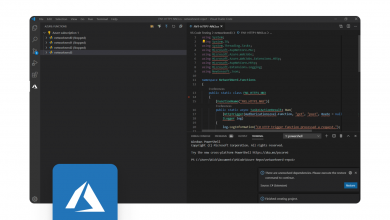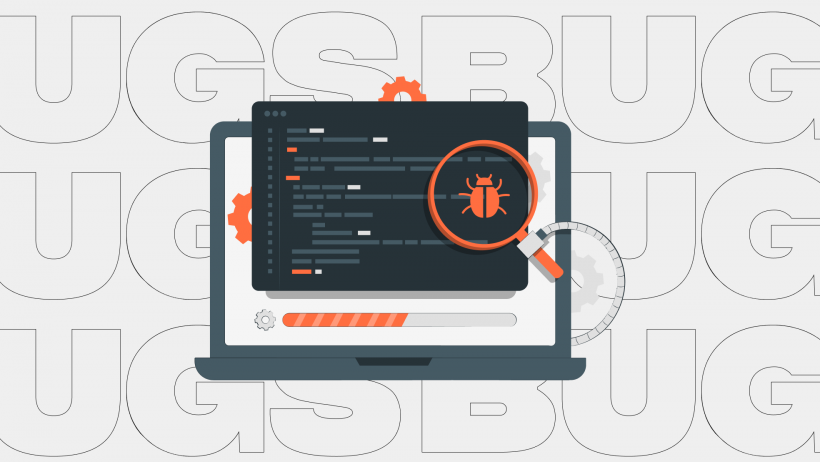"A bug found in the application" is a terrible phrase for the developer but it's seen far toooften. Errors during development are to be expected and it is important to detect and correct them in a timely manner. Let's take a look at what bugs are, what mistakes one can make and what to do about it.
What are bugs?
Bug is a slang word. Literally it describes an order of insects and means an error in the program. However it does not have to be a mistake, only an unexpected result of your work. This is a normal phenomenon that occurs in the development of any complex product. It is impossible to take into account all factors at once. The question is how many bugs will be detected and how application or site bugs will be fixed by developers.
As a rule, the problem is detected during appdebugging or beta testing. Sometimes the bug manifests itself even after the product has launched. In this case, updates will be prepared.
There are quite a lot of ways errors manifest, among them:
- An error message appears, but the program continues to work;
- The application freezes or crashes without warning;
- A warning appears and the application crashes;
- A message is sent to developers at the same time as the error.
- The software doesn't just work incorrectly, it sheds important functionalities or interface elements.
Bugs are a normal and inevitable phenomenon of any complex software. The common user got acquainted with this mainly through video games and office programs. Even corporations like Microsoft or Google, which employ thousands of QA specialists, cannot fully guarantee their absence in their products.

Programming errors.
There are several types of errors in programming. They can no longer be called bugs, because some of these errors can lead to serious consequences. They can also lead to additional bugs. Here are the main problems:
- Syntax error. When a programmer writes code, he can make a typo or put an extra character. In this case, the code will simply not be compiled, the system will say that there is an error in the code and will most likely show where it is.
- Warnings. The program will be assembled and will continue to work, but may issue a warning that there are minor violations in the code. They may not fundamentally affect performance, perhaps not critical, but can lead to undesired consequences. For example, the program becomes bloatedand takes up more RAM than it needs to. A large number of spins can then lead to critical errors.
- Segmentation error. If the program tries to write some data to a cell that is not intended for this type of record, this problem occurs.
There are other types of errors, these are only the most common. If they occur, the programmer should find the problem and fix it. Otherwise, the program may simply stop working.
Bugs in programs
We have now determined what bugs are. It's not just a mistake, it's a mismatch in the expectation of behavior and reality. A bug in the program can sometimes be humorous(in a video game, for example). ,Not for the application owner, of course, and not when the error harms the business. Sometimes it can lead to real tragedy.
In the eighties of the last century, a tragedy occurred with the programmable radiotherapy device Therac-25. At least 2 deaths have been documented due to the fact that patients received overdoses of radiation from the device. The reason for this was a fatal bug in the software.
So, there are spheres and software in which bugs are unacceptable. If there is an error in the application, what should I do? Suspend any potentially risky operations and contact developers - only after careful code analysis and regression testing can you start to think about troubleshooting.
What does the number of bugs depend on?
Bugs appearing in software depend on many factors. In some cases, they may not appear at all, in others they may occur at every step. Bug prevalemce depends on:
- Experience of the development team - how well they know the code and are able to solve non-standard problems;
- Technical complexity of the project - the more complex and richer extensivethe functionality, the higher the probability of missing a bug;
- The number of processes that occur within the application;
- Interaction with other participants, during development, programmers cannot completely predict user behavior;
- Test efficiency.
In general, a bug is a constant companion of any development so that they are not encounteredat every user action. That's why we provide technical support for our products to eliminate minor problems.
Kindsof errors
There are a large number of categoriesof programming, and each direction has its own types of errors. Some of them are critical, others lead to minor bugs. Here are the main types of errors:
- Logical error. One of the most serious. The program compiles and works, but draws the wrong conclusions because logic of the application is incorrect. To detect an error, sometimes you have to rework the entire structure of the program.
- Syntax error. As mentioned before, the "grammar" is incorrect. It's easy to fix as the compiler shows where the problem is.
- Compilation error. A problem may arise during the conversion to a machine-readable form. Sometimes the code is completely error free and the problem is in the compiler itself. This problem is solved at the development stage.
- Execution environment error. Occurs when the program is run on the device. For instance when media resources are not taken into account.
- Arithmetic error. Programs that use digital computing may be subjected to a banal error in arithmetic. For example, if the programmer did not take into account fallacies like division by zero. This is one type of logical errors.
- Resource errors. Violation of access rights or a problem where the value of a variable exceeds the maximum allowed value.
- Interaction error. Occurs if a software and hardware interface mismatch appears. In the case of web applications, this may occur due to an incorrect web protocol.
These are the main types of problems that may arise during development. Some of them create application bugs, others lead to adverse repercussions and incapacity. They are eliminated by testing.
How to avoid mistakes?
To effectively address software issues, comprehensive testing is essential. This includes a variety of tests, as even the most skilled programmers can miss errors. Debuggers are a key tool in this process, automatically monitoring program performance and alerting to any problems encountered. Additionally, unit tests are crucial; specialists create scenarios for each component, predicting expected outcomes. If results deviate, warnings are triggered, guiding programmers to identify and rectify the issues.
In the realm of Flutter app development, this process involves specific testing methodologies. These include user interface tests to ensure the UI behaves as expected, integration tests to examine component interactions, and QA automated tests to check overall app functionality with automated scripts.
Alpha testing is another vital stage where developers simulate user activities to detect issues. This is followed by beta testing, where real users test the program in practical scenarios. Together, these tests are instrumental in refining the product and reducing error risks.
However, encountering errors in launched programs is a normal occurrence. In such cases, proficient developers, like the Wezom team, swiftly address these issues. They provide warranty service and bespoke post-release support for all their developed products, ensuring ongoing reliability and user satisfaction.




